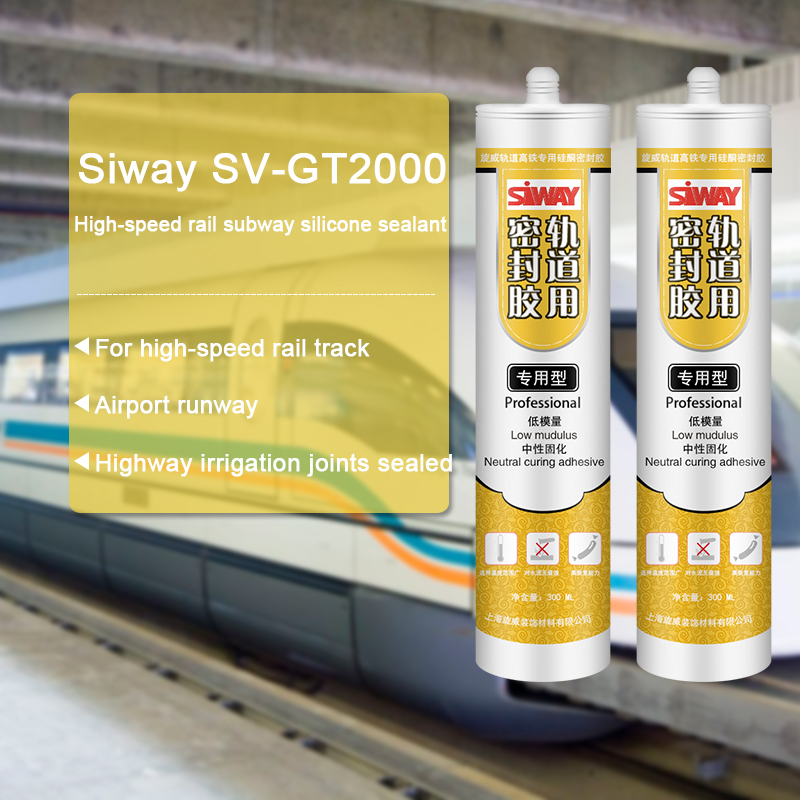2 Years’ Warranty for SV-8800 Silicone Sealant for Insulating Glass to Cape Town Manufacturers
Short Description:
Description SV-8800 is two components, high modulus; neutral curing silicone sealant specifically developed for assembly of high performance insulated glass units as secondary sealing material. Where to use It is a two-component silicone that offers variable work life with high bonding strength to maintain the integrity of insulating glass unit, suits both commercial and residential IGU. Key Features 1. High Modulus 2. UV resistance 3. Low vapor and gas transmission 4. Primerless adhesion...
Our personnel are always in the spirit of "continuous improvement and excellence", and with the superior quality products, favorable price and good after-sales services, we try to win every customer's trust for 2 Years’ Warranty for SV-8800 Silicone Sealant for Insulating Glass to Cape Town Manufacturers, We stick to providing integration solutions for customers and hope to build long-term, stable, sincere and mutual beneficial relationships with customers. We sincerely look forward to your visit.
Description
SV-8800 is two components, high modulus; neutral curing silicone sealant specifically developed for assembly of high performance insulated glass units as secondary sealing material.
Where to use
It is a two-component silicone that offers variable work life with high bonding strength to maintain the integrity of insulating glass unit, suits both commercial and residential IGU.
Key Features
1. High Modulus
2. UV resistance
3. Low vapor and gas transmission
4. Primerless adhesion to coated glass
5. 100% compatible to SV-8890
Technical data sheet
| Test standard | Test project | Unit | value |
| Before curing——25℃,50%R.H. | |||
| GB13477 | Specific gravity(After mixing) | 1.33 | |
| GB13477 | Operating time | min | 20-40 |
| GB13477 | surface drying time(25℃,50%R.H.) | min | 80-188 |
| corrosivity | No | ||
| 7 days after curing——25℃,50%R.H. | |||
| GB/T 531 | Durometer Hardness | Shore A | 40 |
| GB13477 | The tensile modulus at 12.5% elongation | Mpa | 0.18 |
| The ultimate tensile strength | Mpa | 0.92 | |
| GB13477 | Elongation limit (fracture) | % | 150 |
Certification
GB-24266-2009;
Color
Component A(Base) – White, Component B(Catalyst)- Black
Package
1. Component A(Base): (190L), Component B(Catalyst) (18.5L)
2. Component A(Base):24.5kg (18L), Component B(Catalyst): 1.9kg (1.8L)
Shelf life
12 months
Note
If you want the TDS or MSDS or other details, please contact with our sales person.
I show you exactly how to fix a flat car tire that was punctured by a screw using a rubber plug repair kit. You can find a tire plug repair kit at Amazon (affiliate link):
https://amzn.to/2rMaE3o
The rubber plugs can be applied to the tire while it is mounted on the vehicle if you are able to reach the damaged area. I recommend you remove the tire for the repair, this will make the damage easier to get to and therefore more likely you will apply the plug correctly and it is safer.
The first step is to locate the offending foreign object in your tire. Remove the object, usually a screw of nail. Use a reamer tool to prepare the hole for rubber string plug. Insert the reamer probe tool into the puncture. Work the probe in and out while twisting to clean and prep the puncture hole. This process will also enlarge the hole to that the rubber string plug will fit through.
Take each end of the repair strip, this is the plug, and roll the center of the strip into the needle eye. Apply dabs of rubber cement to the end of the needle and push the needle into the puncture leaving about a quarter inch above the surface of the tire. The needle can be difficult to push through depending on the size of the puncture.
Twist the handle a quarter turn and pull the needle out of the tire, the plug should not come out with the needle. Now cut the remaining plug down to about 1/8 of an inch with a razor or scissor. Done.
I showed how I preserved silicone in a previous video, and wanted to show that it does work. RTV is Room Temperature Vulcanizing.






